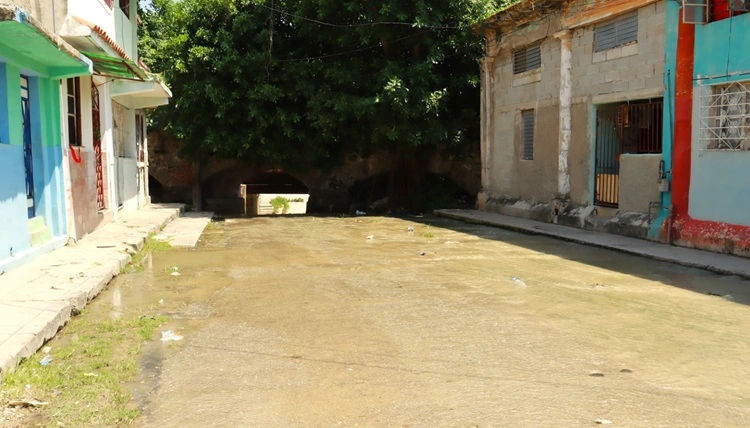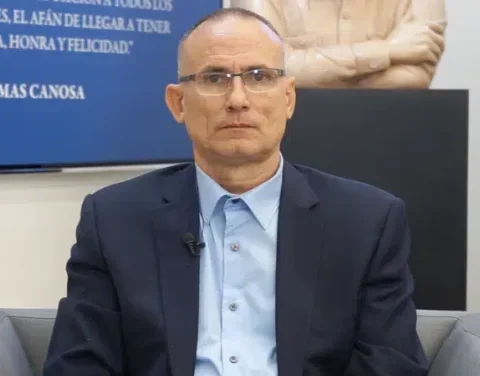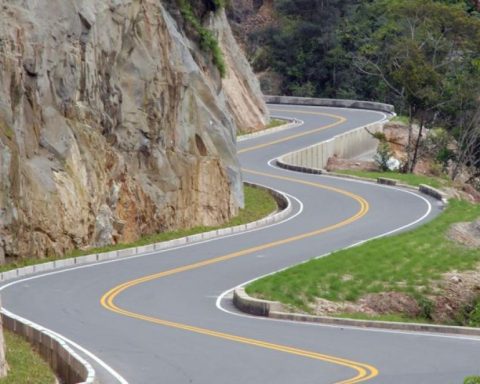HAVANA, Cuba.- Letting water run when it is not meant to be drunk is just a metaphor from the proverb. However, in El Cerro it happens in practice, thousands of liters escape daily through the numerous leaks that undermine the hydraulic network of the municipality. The problem is not new, but it gains relevance in the midst of the crisis which part of the city suffers from a shortage of this vital liquid.
Every so often, the National Institute of Hydraulic Resources (INRH), the Havana Water Company (AH) and Viales arrive in popular municipalities such as Palatino, El Canal and Las Cañas, tearing up their streets, replacing pipes and patching up leaks. However, the repairs do not last. Shortly afterwards, the liquid filters through the asphalt again and, like a spring, runs and is wasted down the street.
Also, as one group of leaks is removed, another larger one emerges along the conduits that supply the Cerro. In the meantime, it is estimated that Some 600,000 Cubans suffer from a shortage of drinking waterIn the capital, recent updates indicate that At least 12 of the 15 municipalities suffer serious damage upon receipt of the fluid.
The crisis has led to more than 130,000 Havana residents lacking adequate access to drinking water. The most complex situation is in the municipality of La Lisa, where eight popular councils are supplied by the service of water trucks, according to the directors of AH and the INRH in the Free Access space of Canal Habana.
Boyeros, 10 de Octubre, Habana del Este, Habana Vieja, San Miguel del Padrón and Cerro are also seriously affected; the latter receives water supply for about five hours every third day and, in its higher areas, only a trickle of water falls through the pipes of homes for two or three hours in the same cycle.
“Many times the day is not right, or the water doesn’t come up, and those who don’t have a water pump barely have enough to drink or cook with. The saddest thing is that the streets are flooded. Why don’t they fix the leaks?”, complained Asiel López Montoya, a resident of the Palatino People’s Council.
Parallel to Via Blanca Avenue, on Armonía Street, several leaks have been repaired for more than three years in a section of less than 500 meters. Some have been the subject of repeated repair work, but the poor quality of the pipes used and the power of the fluid (due to its proximity to the Palatino pumping system, which pumps water to Plaza de la Revolución and 10 de Octubre) cause them to burst again in a short time.
During August, one of the oldest in that circuit was recovered, the one located in Armonía, between Chaple and Suzarte. According to what he explained to CubaNet one of the workers on the project, the old conduit was replaced with a polyethylene one that guarantees greater resistance to the conditions of the terrain and the pressure reached by the conductive network.
“These are the ones that are being used in the new works, with these the leaks will end. We started here because of the number of complaints, but we don’t know when the remaining ones will be serviced. That depends on Investments,” said the source, asking to remain anonymous.
While waiting for more funds to be approved, two other leaks are pouring out on the corners of Armonía with Suzarte and Resguardo, and by gravity the water spreads towards dozens of streets. The situation is multiplied throughout the geography of El Cerro. Among the oldest leaks are those that originate on Pezuela and Primelles streets.
In the El Canal Popular Council, San Cristóbal is one of the arteries that is regularly flooded by leaks. Many residents have had to build small walls at the entrance to their homes to prevent water from entering, which in many places exceeds the level of the sidewalks.
Orlando Oropeza Valdivia, who lives on the street, said that “this disaster happens every day.” “As you can see, you can’t even cross the street. The blockages in the sewers also contribute to the flooding of this entire low-lying area, and the worst thing is that the drinking water and the water coming from the leaks in the septic tanks mix together,” he laments.
Contradictorily, while the liquid runs like a stream just a few centimetres from the doors, inside the homes people have to save every last drop stored. According to Senén Terraza Cuéllar, when the distribution cycle is violated it is common to see people collecting water with buckets in places where it is supposedly not yet contaminated.
“It is like getting water from the river, the only thing in El Cerro is water that comes down the street. People collect it to clean the house and to throw it into the toilet. The water from the tanks is kept to fill the bottles for cold (to drink), to cook,” said the interviewee.
For his part, Arnaldo Cejas Quiñones questioned the performance of the authorities in solving the crisis: “Then they say that there is no water, shame is what there is not. Go to the Canal alley to see, it looks like the spillway of a dam. Supposedly they do not have the resources to fix the leaks, but they do not stop building hotels”.
During July and August, the delay of more than 10 days in the supply of water in several areas of the city led to new popular protests.













